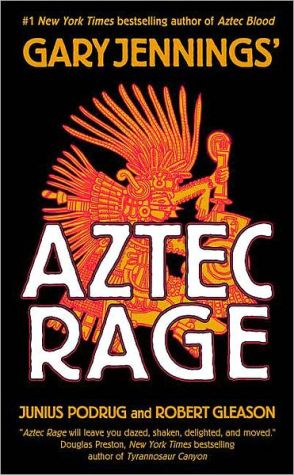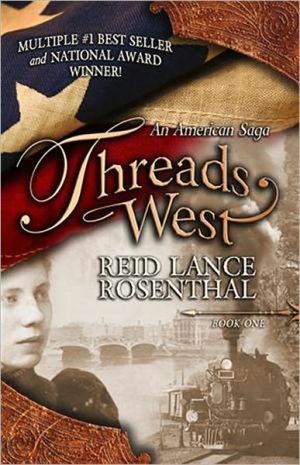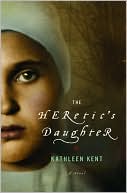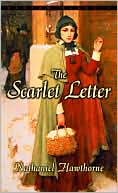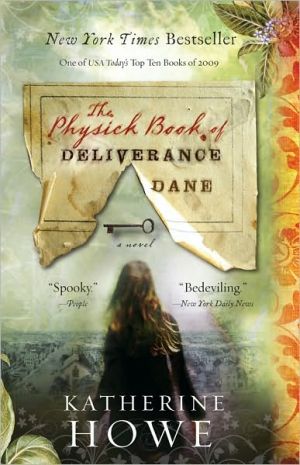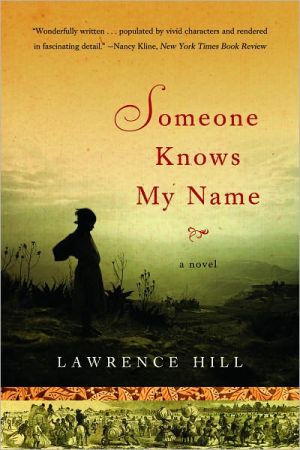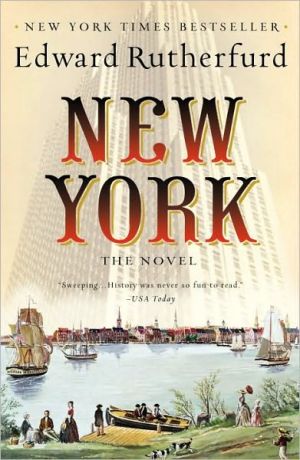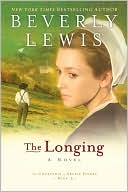Aztec Rage
The fascinating history of Mexico that began in the #1 New York Times bestselling novel Aztec continues . . . .\ Don Juan de Zavala was the most skilled fighter in all of New Spain—as gifted with weapons and horses as he was with women. These pleasures were all he desired. But the magnificent Aztec empire, its grand cities and riches lay broken under the Spanish boot . . . Now valiant men and fearless women rise and battle their brutal overlords. As a warrior-priest leads an Aztec revolt,...
Search in google:
The next installment of the sweeping historical novels that take readers in to the rich past of Mexico.BooklistJennings, this time with two coauthors, returns to the roily history of the Aztec empire and the colonization of New Spain in this latest entry in the best-selling cycle he began with Aztec (1982), followed by Aztec Autumn (1997) and Aztec Blood (2001). The focal character in this atmospheric yarn is swordsman Don Juan de Zavata; it is his swashbuckling adventures, and the threat of exposure of his true parentage, that lead him--and spellbound readers--from colonial Mexico, where the Aztec civilization lies in ruins, to the Spain of Catholic repression and Napoleonic ferment. What the novels in this series do so well, and this latest installment is a prime example, is to lend a resonant understanding of not only Aztec and colonial customs and even mind-sets but also how repressed peoples, whether by the act of conquest or the act of religious control, will indeed have their own day--how their resentment builds, in other words. A beautifully detailed novel for historical fiction fans.
Chapter One\ Mountains Where the Cougars Lurk, 1541\ I watched myself die.\ My nightmare took life as invaders emerged from the fog like fantasmas, ghosts in the mist, dark figures on great beasts, menacing as shadow gods risen from Mictlán, the Dark Place. I lay in the brush and trembled, my heart pounding, my throat aching for water, the ground shaking under me as powerful hooves pounded in advance of a thousand human feet. My spear was tipped with an obsidian point, but it would fare poorly against the charge of a warhorse wearing the thick leather guard called a Cortés shield.\ We set up the ambush in the rocky, mountainous terrain of Nochistian, waiting for the Spaniards and their traitorous indio allies to fall into the trap. As the fog settled, the enemy had come forth. Now I had a choice: to stay hidden and let my compañeros fight and die without me or to gather my courage and rise and fight an armored Spaniard riding a powerful warhorse.\ As I pondered the decision, the dark vision came to me again: fight and die. I saw a violent clash, my life blood escaping, my sin-blackened soul being pulled down to hell by clawed hands.\ The warhorses frightened me the most. It is said that it was not the small army Cortés brought with him twenty-odd years ago that defeated the mighty Aztec Empire, nor even the tens of thousands of indio allies he enlisted, but the sixteen great warhorses that carried him and his best fighting men into battle.\ There were no beasts like these in the One World before the invaders came. The great warhorses had terrified the Emperor Montezuma and his Eagle and Jaguar Knights, the finest warriors in all the One World. The warriors believed the tall, powerful, four-legged creatures were gods; what else could these denizens from Another World be but spirits of the Earth and Sky? They ran like the wind, crushed any before them under their heavy hooves, and made the warriors on their backs a hundredfold more deadly than those on foot.\ As a rider came closer, I realized that it was an indio on horseback.\ ¡Ayya! I had never seen an indio on horseflesh before. Horses were powerful weapons in war, jealously guarded by the Spanish, who forbade indios from owning or riding them. Tenamaxti, our leader, told us that the Spanish had mounted the caciques, the chiefs, of their indio allies on horseback so their foot soldiers could better follow them in battle. "The traitors who fight for the invaders call the horses big dogs," Tenamaxti told us. "They rub the sweat of the horse onto themselves to get some of the beast's magic."\ Tenamaxti knows the invaders well, having lived in the Aztec capital the invaders now call Méjico City. He is known to the Spanish by the name they gave him, Juan Británico.\ Horses were not the only thing forbidden to indios by our new masters. When our leaders and gods failed us, the invaders captured more than the gold of our kings; they enslaved us with a terrible servitude: the encomienda, vast grants of power and privilege, fiefdoms given to Spaniards. We called these white men on their grand horses gachupines, wearers of spurs, sharp spurs they used to rowel our backs bloody as they stole the food from our mouths.\ Their mighty king, the one they call the Catholic Majesty, presses his seal on a piece of paper, and thousands of indios in a region are enslaved to a Spaniard who comes to the One World with one purpose: to grow rich on our labor. To this wearer of spurs we must give as tribute a share of all that we grow on our land or produce with our hands. When he wants a noble palace built for his comfort, we stop tilling our land and carry the stones and cut the timbers needed. We must tend his cattle and his horses but not touch the meat of the farm animals or mount the horses. ¡Ayya! When he demands, we must lend him our wives and our daughters.\ Is it any wonder that when Tenamaxti gave the call, we gathered as in the days of the great Aztec kings, bringing spears to kill these invaders who enslave us?\ As I watched the dark figures in the fog, one who rode taller in the saddle than any other appeared. ¡Yya ayya! It could be no other than the Red Giant himself, Pedro de Alvarado, the butcher of Tenochtitlán, a fiend with hair and beard the color of fire. Known for his rashness and cruelty, Alvarado was infamous second only to the Conqueror himself for his brutal atrocities.\ He first earned fame—and evil reputation—when Cortés was forced to leave Tenochtitlán, the Aztec capital, and rush to Veracruz to defeat a Spaniard who had landed with a force of men, intending to deprive Cortés of his command. He left Alvarado behind in Tenochtitlán with eighty Spanish conquistadors and four hundred indio allies to hold the great city. Alvarado also held Montezuma captive. Paralyzed by his belief that Cortés had fulfilled the prophecy that the god Quetzalcóatl would return to claim the empire, Montezuma was easy prey.\ While awaiting Cortés's return, Alvarado heard a rumor that the leaders of the city planned to take the remaining Spanish captive during a festival. A man of unlimited expediency and utter cruelty, Alvarado attacked first: As the festival began, his men opened fire on the people celebrating in the marketplace. But it was not Aztec warriors he blasted with cannons and had put to death with swords, spears, and harquebuses . . . a few notables and warriors were killed, but a thousand women and children were slaughtered in the orgy of bloodletting.\ Cortés defeated the Spanish commander who intended to usurp his authority and returned to the capital to find Alvarado and his men holed up in Montezuma's palace and besieged by Aztecs angered by the massacre of innocents. Not able to defend their position, Cortés led his men out of the city, and it was in the retreat that Alvarado, the Red Giant, gained his greatest fame.\ On the evening that came to be called La Noche Triste, the Night of Sorrows, Alvarado achieved an immortal feat. The Spanish had retreated onto the causeways that led over the lake to the city. During heavy fighting, faced with a break in the causeway too wide for any man to leap, Alvarado, weighed down with heavy armor, turned his back on the Aztec warriors attacking him, ran to the edge of the causeway, stabbed his spear into the back of a drowning man who had already fallen into the water, and vaulted over to the other side.\ Many times I had heard his amazing tale, and now I realized he was the powerful foe in the dark vision of my own death that had haunted me.\ I could no longer lie upon the ground and tremble like a frightened child. I had to face the Red Giant. I rose, clutching my spear. In the tradition of a Jaguar Knight, I gave the cry of that fierce jungle beast to add the strength of the jaguar's god to my own.\ Even through the din of battle that had erupted around us, Alvarado heard my cry. He swung in the saddle and turned to look at me. He spurred his great stallion, raised his sword and gave the cry of his war saint. "For Santiago!"\ I watched myself die.\ The vision of my own bloodied, lifeless body that had long haunted my sleep flashed as the warhorse charged, carrying on its back the most famous warrior in the One World. My wooden spear, even with its razor-sharp obsidian point, would not penetrate either the horse's thick padded shield or the armor of the Spaniard. The only way to defeat the invader was to bring him down by making his horse fall.\ I threw my body at the horse's knees, using my spear against the ground much as Alvarado had used a spear in his famous leap.\ My body broke the stride of the warhorse as if the beast had run into a huge rock. It began to topple onto me. I saw it, slowly falling . . . like a big tree, gathering speed as it came down on me. I saw Alvarado's frantic, startled look as he, too, came down, toppled from his mount, flying headfirst to the rocky ground. I felt my bones breaking, my chest caving, no breath coming, as the huge warhorse crushed me—\ Copyright © 2006 by Eugene Winick, Executor, Estate of Gary Jennings
\ BooklistJennings, this time with two coauthors, returns to the roily history of the Aztec empire and the colonization of New Spain in this latest entry in the best-selling cycle he began with Aztec (1982), followed by Aztec Autumn (1997) and Aztec Blood (2001). The focal character in this atmospheric yarn is swordsman Don Juan de Zavata; it is his swashbuckling adventures, and the threat of exposure of his true parentage, that lead him--and spellbound readers--from colonial Mexico, where the Aztec civilization lies in ruins, to the Spain of Catholic repression and Napoleonic ferment. What the novels in this series do so well, and this latest installment is a prime example, is to lend a resonant understanding of not only Aztec and colonial customs and even mind-sets but also how repressed peoples, whether by the act of conquest or the act of religious control, will indeed have their own day--how their resentment builds, in other words. A beautifully detailed novel for historical fiction fans.\ \ \ \ \ Kirkus ReviewsAnswer "no" immediately if someone asks, "Would you like to know . . . about the men I have killed, the women I have loved, the fortunes I have made . . . and stolen?"There's a certain misguided bravado to opening a historical novel with the hoary equivalent of a movie voiceover, compounded by the fact that the voiceover is voiced by a wannabe Zorro-or maybe the Cisco Kid. Don Juan de Zavala, though a Spaniard in Mexico, finds that the other Spaniards in Mexico just plain don't like him. Narrowly avoiding the priesthood by virtue of an unfortunate incident-"I horsewhipped a fellow seminarian who branded me a sodomite after I described my lurid deflowering of a servant girl"-the resonantly named Don Juan becomes a champion of sword-and-dagger action, leading a revolt against the oppressive gachupines on behalf of the noble indios and criollo rebels who have decided that Don Juan is a pretty good guy, even though he's foppish and educated and all that, because he's a tad on the dark side and was called El Azteca Chico, the Little Aztec, as a lad, and because he's good in a fight. You can guess what Don Juan learns about why he's thus complected, but no matter; he's already torn off across the sea to sign up for action in the Napoleonic Wars, but not before having a minor epiphany or two: "Immersion in the ancient indio culture was slowly transforming me." Creaky plot points and sneering villains notwithstanding, though, this franchised novel ("Gary Jennings' Aztec Rage") is soft porn wrapped in swashbuckling garb, and Zavala is frequently seen unbuckling his swash and piercing the waiting maids and maidens of New and Old Spain with various body parts, all in prose guaranteed to thrill the13-year-old boy who stumbles upon this book at a garage sale. If the Aztecs are enraged, it's because one of them read this improbable mess.\ \ \ From the Publisher"Aztec Rage is the most extraordinary historical novel to appear in years. It will leave you dazed, shaken, delighted, and moved."—Douglas Preston, New York Times bestselling author of Tyrannosaur Canyon \ "Aztec Rage is a major epic, a grand literary canvas of thrills and chills, fire and passion. Even if you think you know Mexico, you will never again look at Mexico the same way. You will look on the Mexican people with new eyes as well, and you will be changed. The final chapter will move you to tears—'I am mejicano!'—will ring in your ears forever." —Kathleen O'Neal-Gear and Michael Gear, award-winning, USA Today bestselling authors of People of the Moon\ "Big, bold, and Bawdy, Aztec Rage is a rip-snorting swashbuckler. . . . It's fiction of the grand tradition."—Stephen Coonts, New York Times beselling author of Liars and Thieves\ "This is a book that will change your ideas about Mexican history and the whole history of the Americas. It resonates with original research and vivid drama. "—Thomas Fleming, New York Times bestselling author of Liberty! The American Revolution on Aztec Rage"Aztec Rage is an extraordinary novel for the accuracy of its history, the vivid voice of its narrator, its sense of drama and joy and its explication of love and hate, told by a picaresque hero who is as fast with a woman as with his sword. Backdrop for action and adventure is the Mexican Revolution sparked by Father Hidalgo's Grito—the cry of revolt that engulfs Mexico and in time South and Central America and squashes the Spanish empire. Amply anchored in world history and always fun, Aztec Rage is a splendid read."—David Nevin, New York Times bestselling author of Dream West\ \ \ \ \ \ of Tyrannosaur Canyon\ - Douglas Preston\ The most extraordinary historical novel to appear in years. It will leave you dazed, shaken, delighted, and moved.\ \ \ \ \ USA Today bestselling authors of People of the Moon\ - Kathleen O'Neal-Gear and W. Michael Gear\ Aztec Rage is a major epic, a grand literary canvas of thrills and chills, fire and passion.\ \ \ \ \ New York Times beselling author of Liars and Thieves\ - Stephen Coonts\ Big, bold, and bawdy, Aztec Rage is a rip-snorting swashbuckler....It's fiction of the grand tradition.\ \ \ \ \ of Liberty! The American Revolution\ - Thomas Fleming\ [Aztec Rage] will change your ideas about Mexican history.....It resonates with original research and vivid drama.\ \ \ \ \ of Dream West\ - David Nevin\ An extraordinary novel for the accuracy of its history [and] the vivid voice of its narrator.\ \
